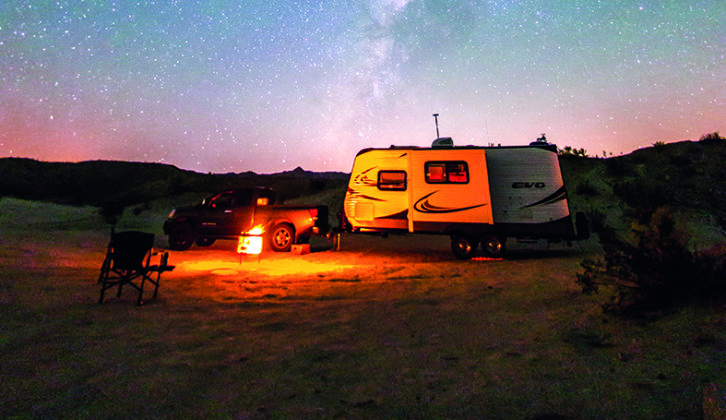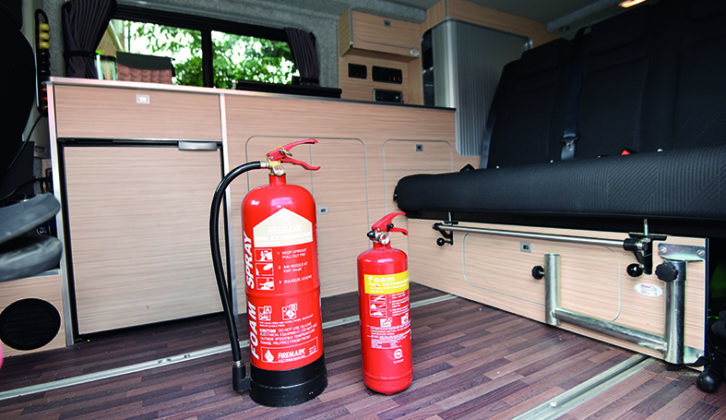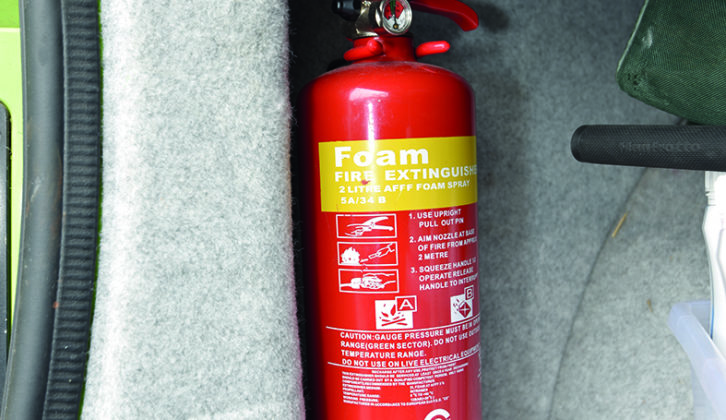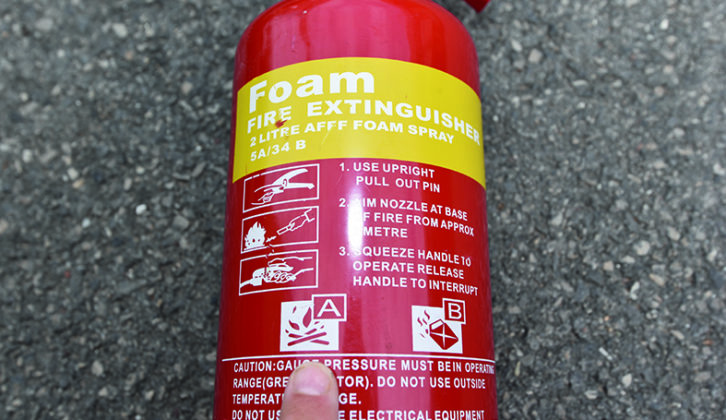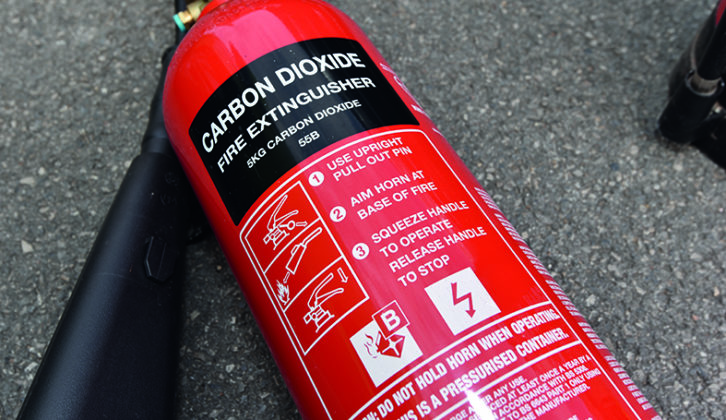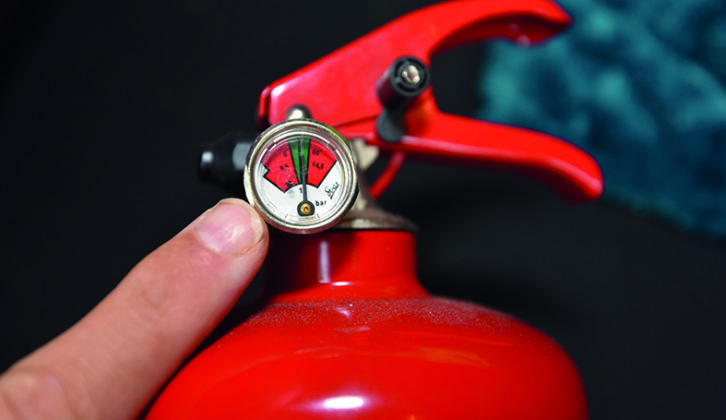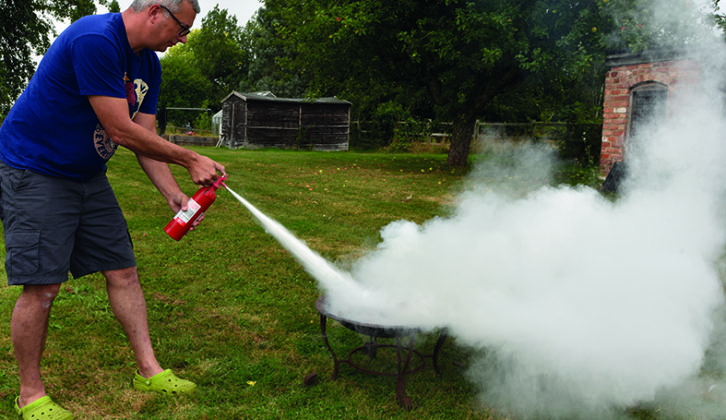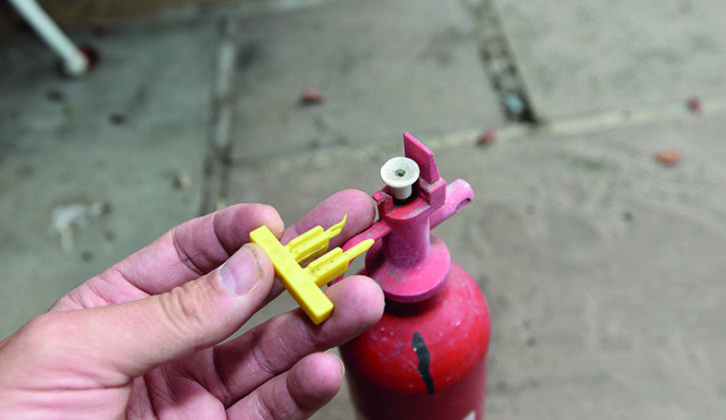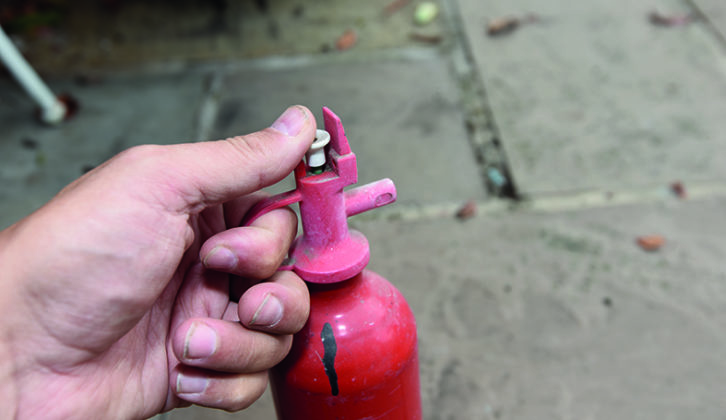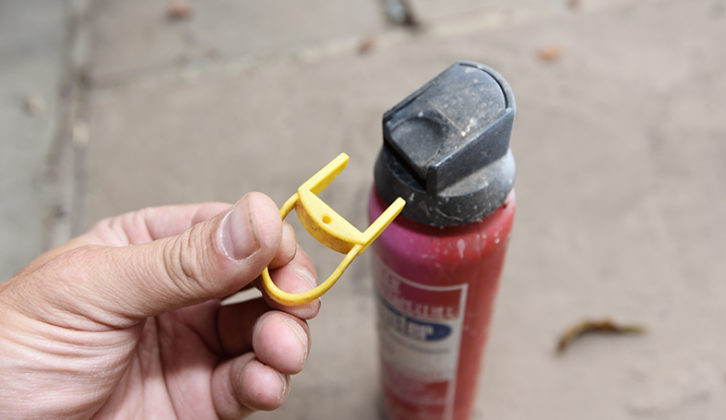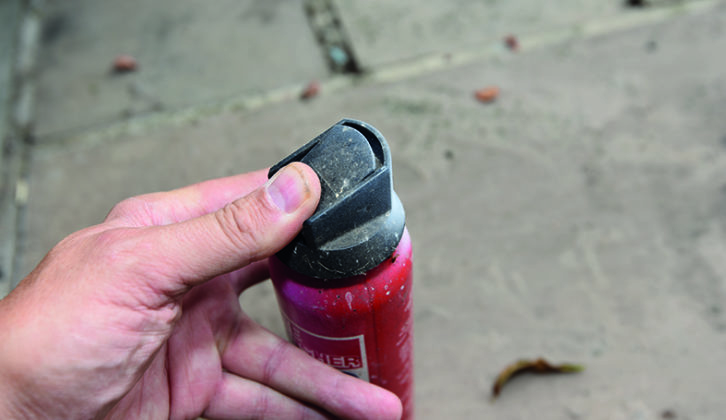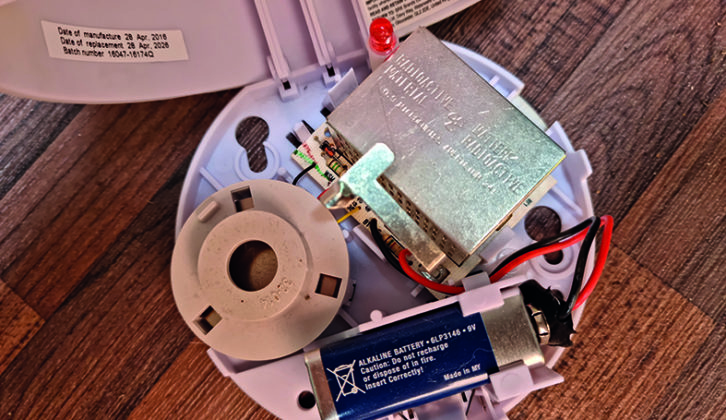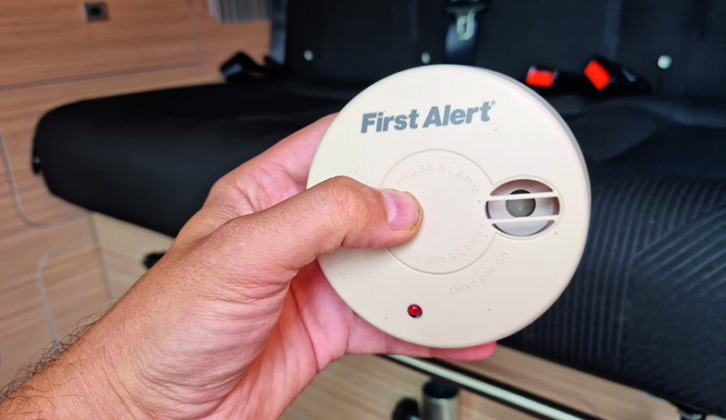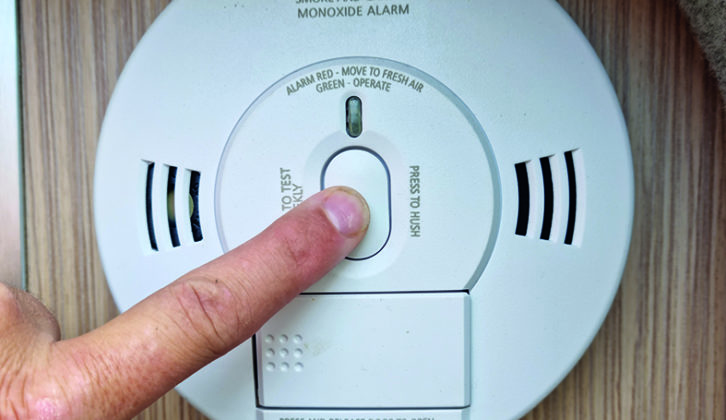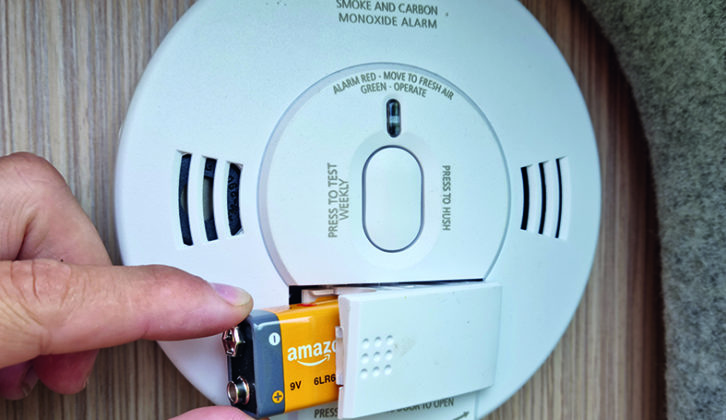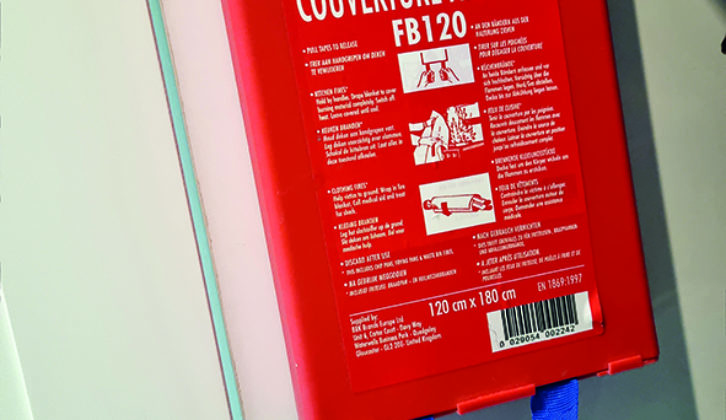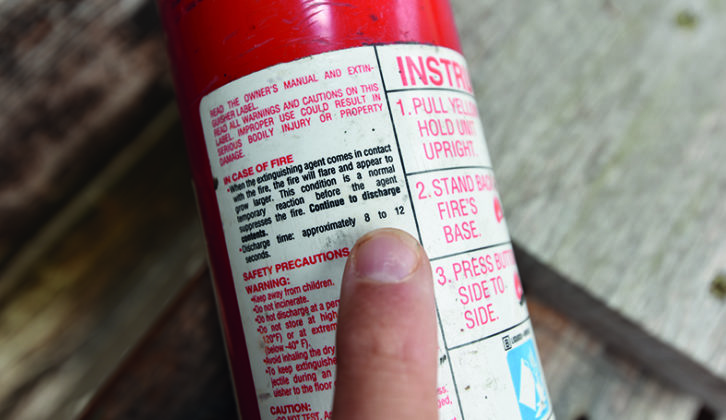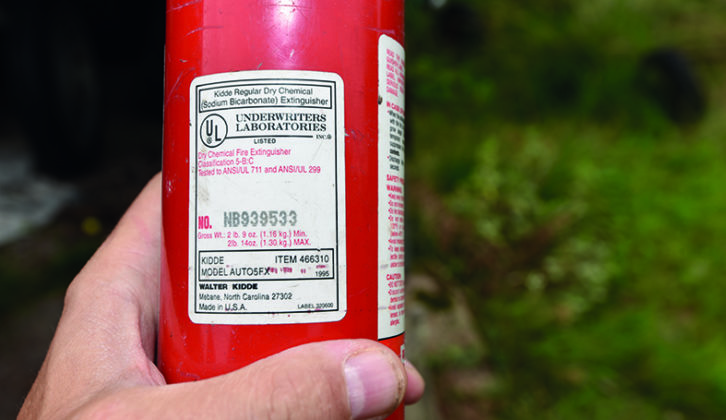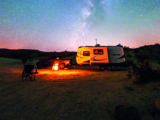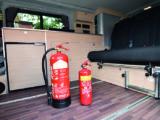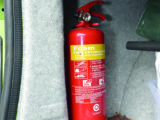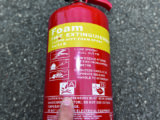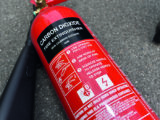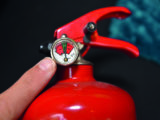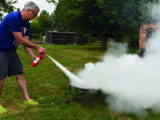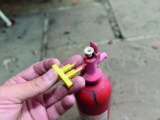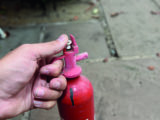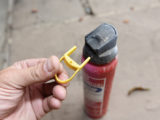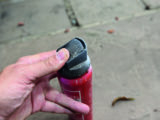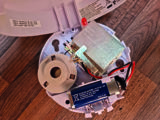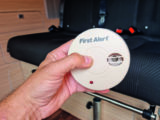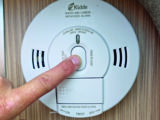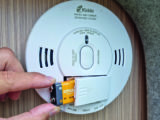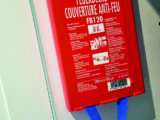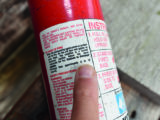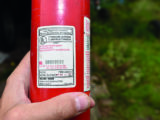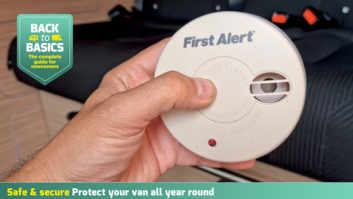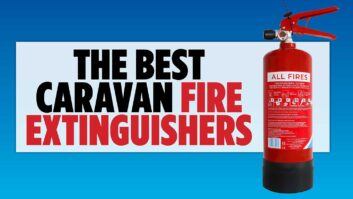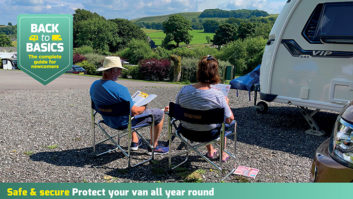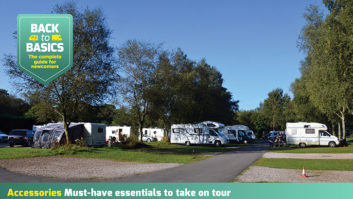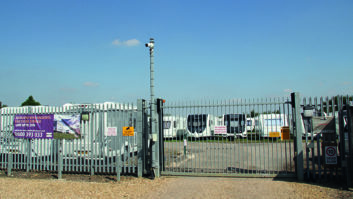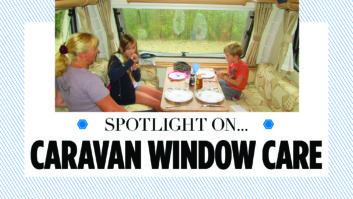According to the Home Office, between 2020 and 2021, more than 1200 vans accidentally caught fire in England, as well as 850 other vehicles. The latter figure includes caravans, motorhomes and minibuses.
While there were no deaths related to vans, there were three deaths in those ‘others’, and 116 casualties. With their additional batteries, wiring and gas systems, many extra hazards can be found in a caravan.
Professionally built tourers have to meet numerous safety standards, making fires very rare, but the growing popularity of DIY projects and cheap electrical kit from overseas has increased the risk. So it’s now more important than ever to think about the safety gear you carry when you’re on tour.
Sources of fire
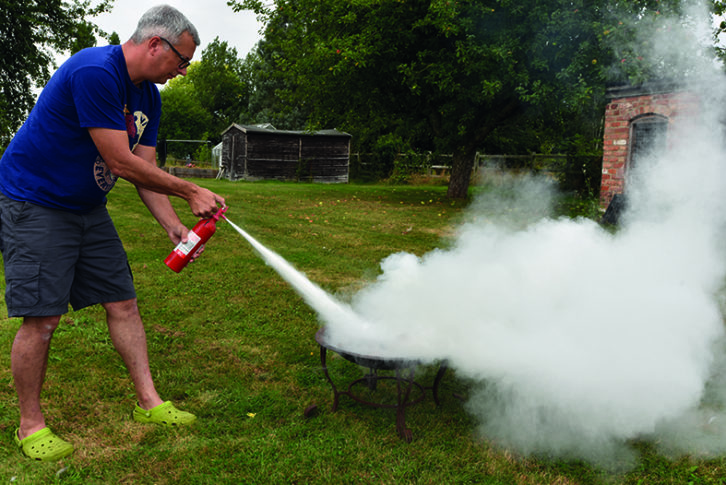
By far the biggest fire hazard comes from cooking in a caravan. The vast majority of incidents start with a hob fire, usually involving a frying pan and hot oil. Few campers deep-fry, but many people relish a cooked breakfast when they’re on holiday. It’s all too easy to start cooking something and then get side-tracked.
Cigarettes used to be another major source of fire, but in the past few decades, they’ve been overtaken by faulty appliances in domestic fires (according to the Home Office) and, given the vast rise in cheap imported electrical equipment, it’s not hard to see that this could be mirrored in caravans.
If you buy an electrical item direct from abroad, how do you know it has passed any UK testing? It’s always best to source your electrical products and appliances direct from UK suppliers and caravan dealerships. Choosing items on price, not quality, could be the most expensive mistake you ever make.
With an original manufacturer-built caravan, any electrical device that connects to the vehicle battery will be fused, as will all of the habitation systems. If your caravan involves any DIY work, then each and every circuit that connects to a battery must have its own fuse. Any wiring circuit lacking a fuse is a potential fire risk. Should a component fail, or a wire rub through its conduit, the fuse will blow and the power will be cut from that wire.
If the circuit lacks a fuse, the wire itself becomes the fuse, the copper will glow and act like a kettle heating element. When the wire’s insulation burns off, red-hot copper will then ignite anything inflammable along its length. Fabric, furniture foam and wooden boarding all burn when the temperature is high enough.
Wiring is often hidden behind the furniture and the carpeting, so these fires are difficult to stop – they keep burning until the wire is ripped off the battery. But it’s entirely preventable – fuse everything! There is no such thing as too many fuses.
The danger of gas
Fires caused by a failure of the gas system are thankfully few and far between, thanks to the many safety systems built into a caravan’s set-up. As well as a shut-off valve on the bottle and inline in the piping, gas hobs and cookers in leisure vehicles are fitted with flame-failure shut-off valves.
Vintage tourers might lack these features, so always shut off the bottle at the cylinder when it is not in use. Make sure all caravans have a gas safety certificate and an annual habitation service.
Should a gas leak occur in a tourer, the issue is that any spark can easily trigger a fire. LPG fires tend to flash up very rapidly, owing to the speed at which the gas expands. The fire service will not tackle an LPG fire – they will evacuate the area and let it burn out. If you ever smell gas in your caravan, leave it immediately, keeping the door open.
Do not touch any electrical switch or reach for the lights – just get out of the caravan. If you can safely switch off the master valve on the gas bottle, then do so, but don’t put yourself or others at risk.
The other cause of fire is poor placement of items inside the caravan – for example, storing aerosol cans in lockers above the hob or covering the heating vents with bedding. Anything that heats, cools or is electrical must be considered when you’re packing.
Types of fire
Although the traditional image of a fire is of enormous flames engulfing everything in an instant, it’s those fires that start in a small, smouldering way that pose much more of a threat.
If wooden laminates, foam bases in cushions and soft trim catch fire, lots of smoke can be produced. This is more of a risk in older vans, because modern ones use flame-retardant materials. So if your tourer has 20-year-old foam-filled cushions, it would be wise to replace them. Slower-burning fires tend to be much more of a threat than large, more obvious fires – they are harder to spot initially and can smoulder away completely unnoticed for quite some time.
It’s the smoke that is most deadly here – it can kill in a matter of minutes – making smoke and carbon monoxide (CO) detectors essential.
Smoke and CO detectors
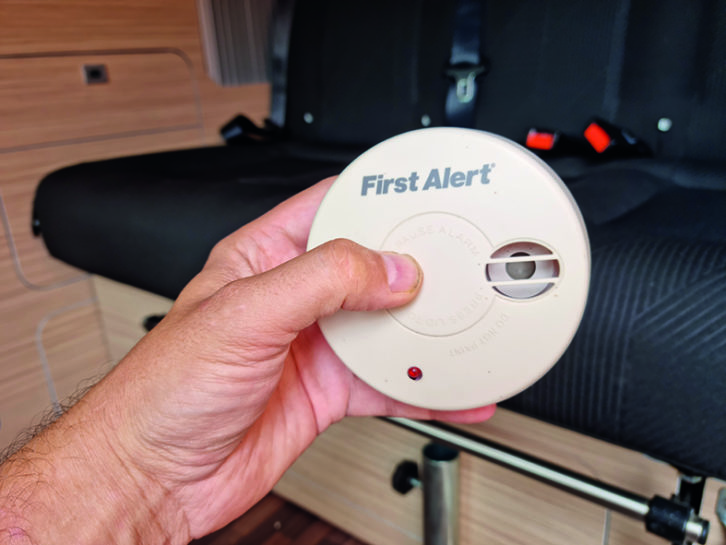
All NCC-approved dealers and manufacturers should fit a smoke alarm in their new and used caravans. If yours needs replacing, or your van lacks one, always buy a smoke detector from a trusted UK supplier and make sure that it conforms to BS 5446 Part 1, EN 54-7.
It’s also worth noting that there are two different types of detection: ionisation and photo-electric. Ionisation types measure ions (electrically charged particles) and will trigger when they sense a change in the electrical balance of the air, and can react earlier than photo-electric types.
Photo-electric versions use a beam of infrared light and a sensor – when they see smoke particles, this reduces the light output to the sensor and triggers the alarm. Photo-electrics tend to spot smouldering fires more rapidly than ionisation alarms.
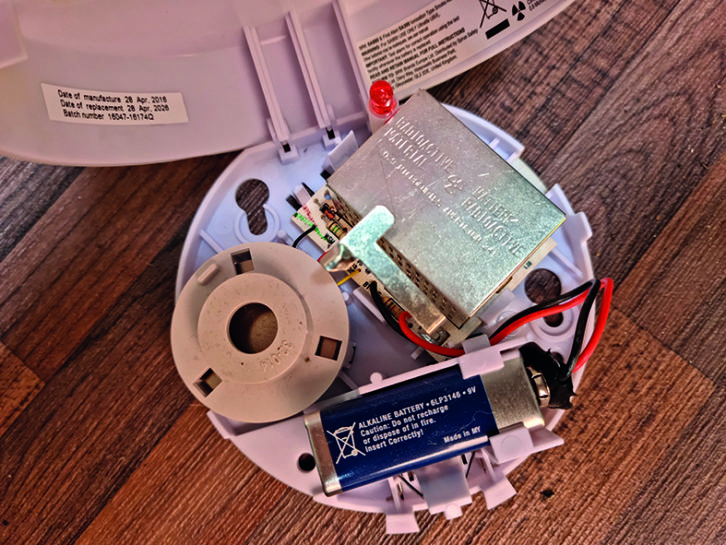
The best smoke detectors use both methods of detection. If your smoke detector has an ‘i’ moulded into its case, or the ‘radioactive’ symbol, it will be an ionisation type.
Photo-electric detectors will have a ‘P’ or the words ‘photo-electric technology’ marked on the case.
As well as smoke, a major worry in any enclosed space is CO, which is produced when gas, coal or wood do not burn fully.
Failing to have an annual habitation check increases the risk of your hob, fridge or heating system not being able to burn efficiently. Barbecues brought inside an awning (for example, because it starts raining) are the most serious risk here – you should never bring a barbecue inside your caravan, tent or awning.
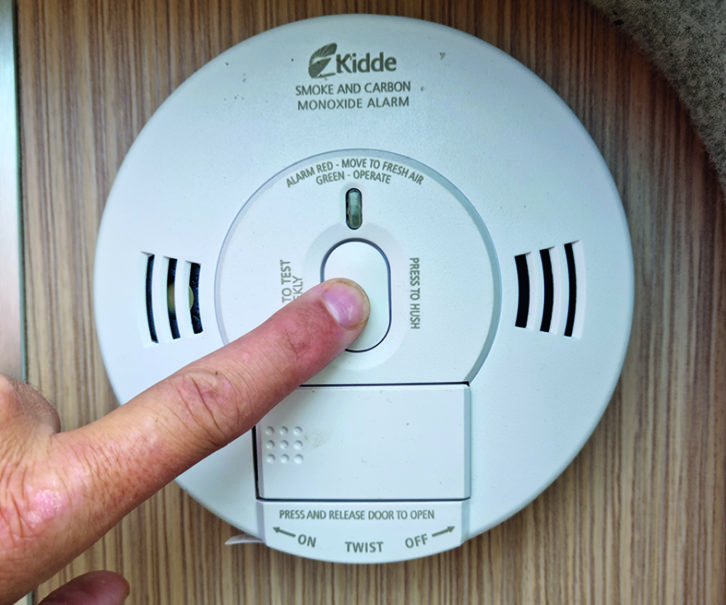
CO is deadly. if this odourless and colourless gas is inhaled, it mixes with haemoglobin in the blood and prevents it from carrying sufficient oxygen, causing the body’s cells to die. Warning signs of excessive levels of CO are tension headaches, dizziness nausea, tiredness, confusion, stomach pain and shortness of breath.
While you can get passive CO detectors in the form of self-adhesive panels that change colour, they won’t alert you to an issue, so you need to invest in a CO alarm. These usually last for about 10 years and cost under £20.
Again, only buy them from a trusted UK source and make sure that they comply with part one or part two of BS EN 50291.
False alarms
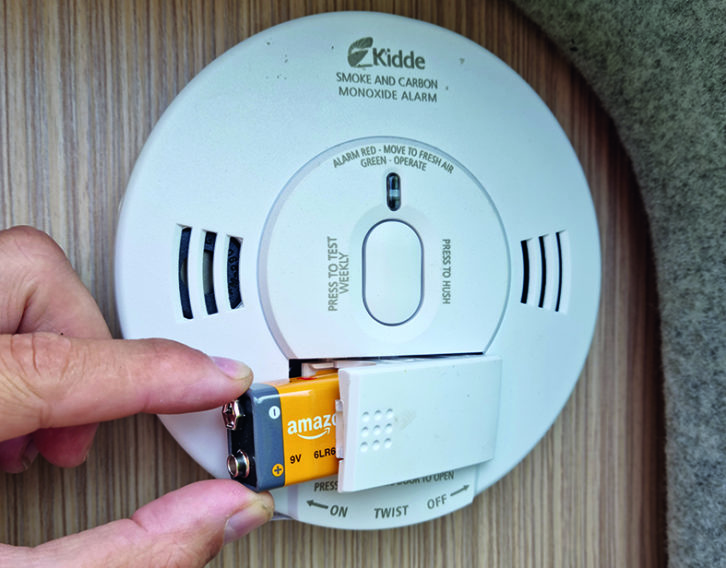
If your smoke detector keeps triggering when you are cooking, reset its test/silence/hush button and try opening some more windows or skylights. It’s tempting to remove the battery – but don’t do this, because you’ll invariably forget to replace it.
If, no matter what you do, your smoke detector keeps being triggered, check the manufacturer’s instructions and see if it can be repositioned. Or try a different type or brand of alarm. Do not remove it.
Types of extinguisher
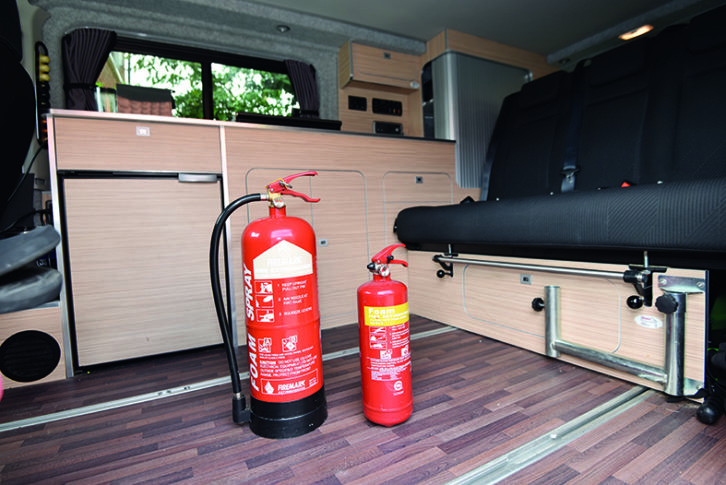
Fire extinguishers come in various types to tackle different kinds of fire. Ideally, you would pack one to deal with each and every possible type of fire, but in the real world, most caravan extinguishers are designed to manage the range of different materials that are commonly found inside your van.
Again, ideally, you’d want a fire extinguisher to tackle all of the classifications shown in the table, together with electrical fires; but no one extinguisher can do that, so you’re best using a combination of a fire blanket and at least one extinguisher.
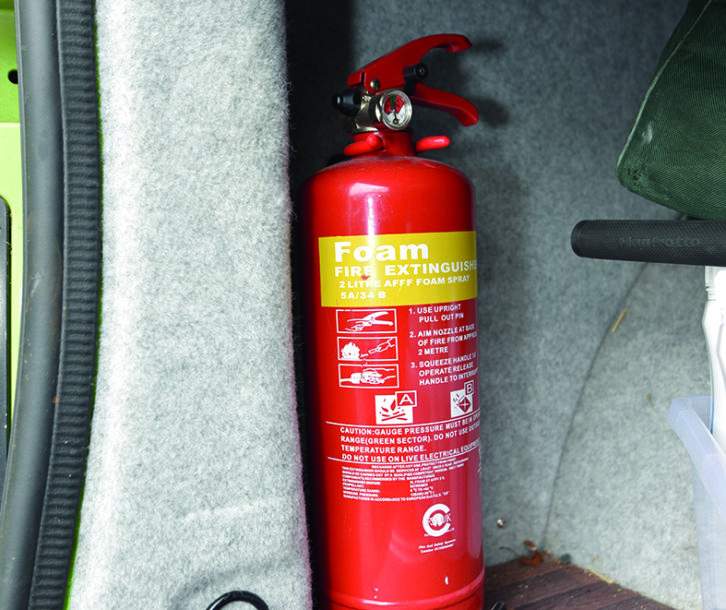
Traditionally, caravan manufacturers used to supply dry powdered extinguishers (usually a red bottle with a blue flash), because they can deal with the widest range of fire types you might find in a van,.
Their downside is that for fires occurring in confined spaces, they can cause some loss of visibility and may result in breathing difficulties (they have been known to trigger asthma attacks).
The other issue is that once the fire is out and you are cleaning up the mess, dry powder is corrosive to metals and electrical equipment, and in addition, it is notoriously difficult to clear away.
For this reason, aqueous film forming foam (AFFF) extinguishers are now fitted in caravans. This type of extinguisher works by smothering the fire in a layer of foam and cooling it, preventing any oxygen from contacting the fire source.
AFFF is far easier to clean away afterwards and less harmful to humans, but like all water-based products, it will cause damage to electrical equipment.
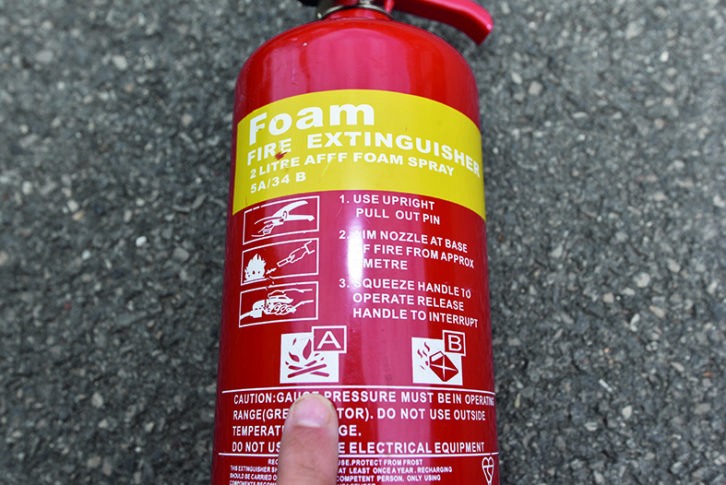
AFFF can tackle Class A and Class B fires, but can’t be used on Class F cooking fat fires. That’s what your fire blanket is for. If you ever have a hob or cooker fire, the key thing is to throw the fire blanket over it, switch off the gas (at the tap or the bottle) and get out.
Having the fire blanket close to hand is absolutely essential and wherever it is sited, it needs to be firmly affixed. All of your fire extinguishers and fire blankets should be fitted where they will be easily accessible – around the entrance door or kitchen is usually best. They won’t be much use if they’re hidden away and you can’t quickly reach them in the event of an emergency.
Bigger is better
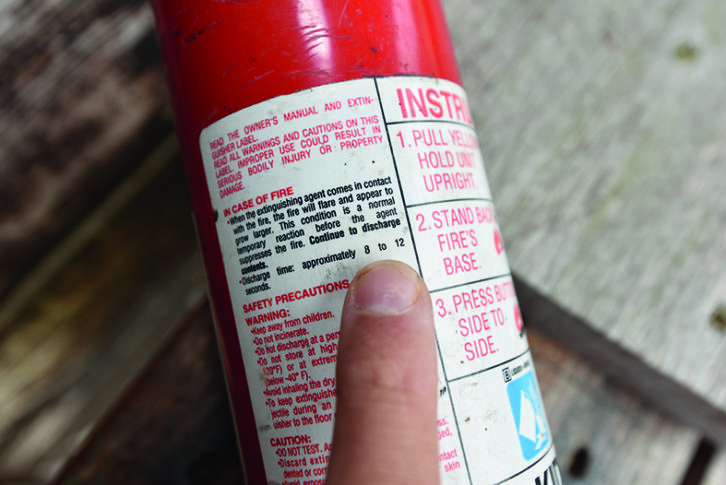
If you have a fire extinguisher that’s the size of an aerosol can, you’ll be surprised how little discharge it has. Forget the mental image you might have of it squirting away merrily for several minutes: most last less than 10 seconds. That’s not going to be a lot of time to put out a fire.
Fire extinguishers also go out fo date – carefully check the expiry date on the bottle’s label and if it has expired, either replace it, or have it refilled and redated.
The general advice is that when a fire extinguisher is five years old, it will need replacing or refilling. You can buy fire extinguishers that offer a 10- or even a 20-year lifespan, but these will cost more.
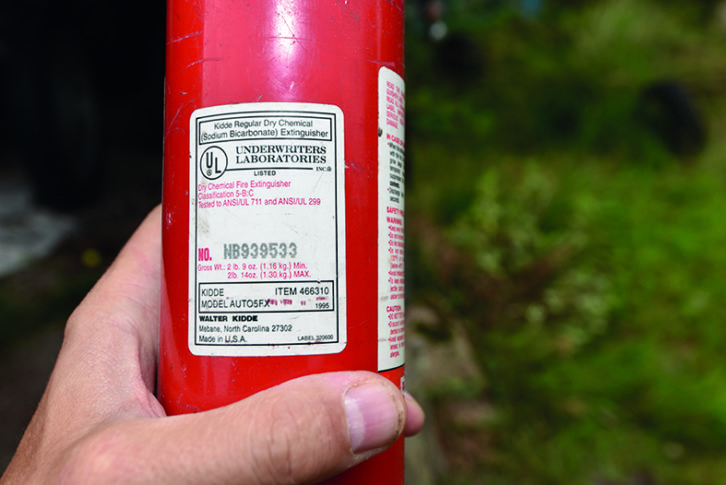
It’s really important to bear in mind that old fire extinguishers, which have passed their refill date, might not work, or could simply operate badly.
With regard to the size of extinguisher you select: opting for 1kg of dry powder or one litre of AFFF is the bare minimum, but the larger the capacity, the more time you’ll be buying to escape.
A two-litre AFFF type should be the minimum size to consider (or alternatively, several one-litre units dotted around your caravan, if space is tight). Higher capacity is always better.
What to do in the event of fire
The number one priority is to get everyone safely out of the caravan. If your smoke detector or CO alarm goes off, or you see a fire, get out.
Only tackle it if you have the correct equipment, have identified its cause and it’s not too late. If you are using an AFFF extinguisher, you will need to aim above the fire, not at the base, so that the foam can blanket it. If in doubt, get out.
All fire safety equipment is designed primarily to protect you, and then put out the fire. Remember, your caravan is insured and can be replaced – you, your family and your friends are far more important than any leisure vehicle.
Verdict
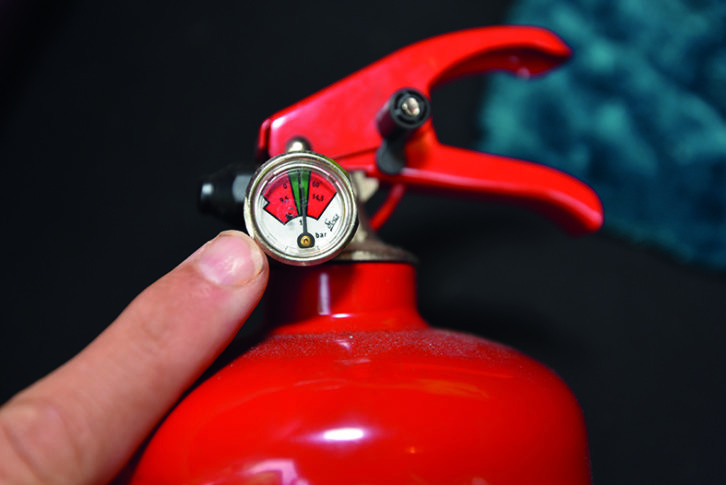
Modern caravans are built to extremely rigorous safety standards; older units and any DIY work with unfused or cheap electrical appliances are the risk when it comes to fire risk.
If you’ve never updated or checked your safety kit, now is the time to do so. A good plan is to make inspecting your fire prevention kit part of an annual checklist. Check the batteries fitted in the smoke and CO detectors every year, and check fire extinguisher dates and pressure.
If you only have a 1kg/1-litre extinguisher in your caravan, consider adding a larger one. Make sure you have a range of equipment to deal with fires and that all occupants know where it is and how it works.
You will probably never need to use the equipment, but it will give you additional peace of mind when you’re out on your next tour.
If you liked this… READ THESE:
How to fit a recessed fire extinguisher
Top Gadgets for Staying Safe on Tour
If you’ve enjoyed reading this article, why not get the latest news, reviews and features delivered direct to your door or inbox every month. Take advantage of our brilliant Practical Caravan magazine SUBSCRIBERS’ OFFER and SIGN UP TO OUR NEWSLETTER for regular weekly updates on all things caravan related.
Fires caused by a failure of the gas system are thankfully few and far between, thanks to the many safety systems built into a caravan's set-up
